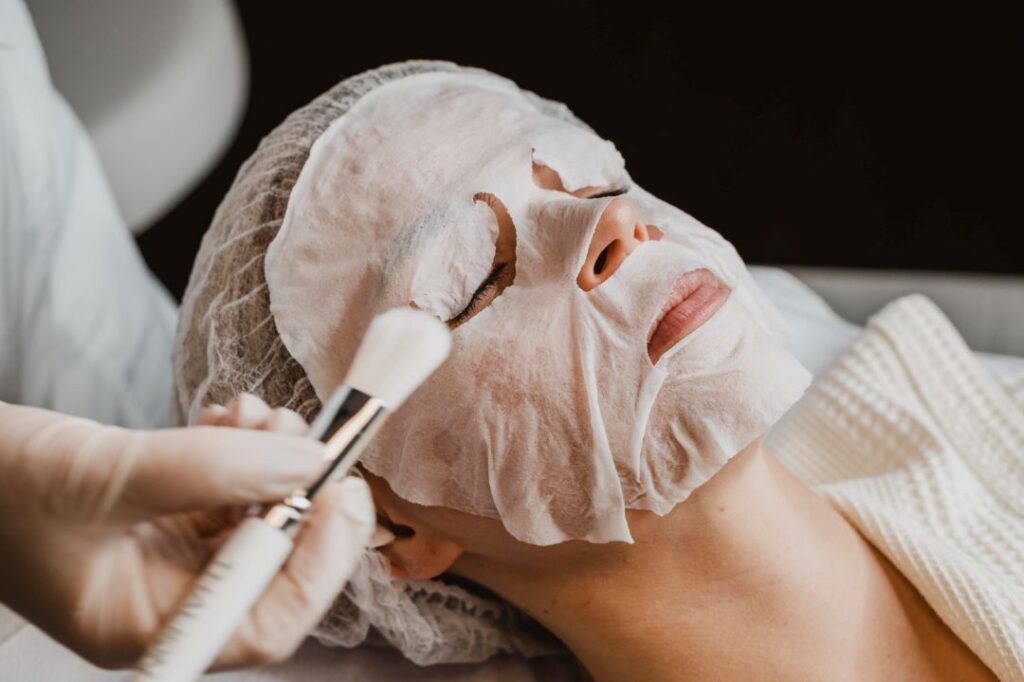When it comes to achieving glowing, youthful skin, exfoliation plays a key role. Two popular options for exfoliating treatments are the Green Sea Peel and traditional chemical peels. While both treatments are designed to rejuvenate the skin, they use different methods and ingredients to achieve similar results. If you’re considering one of these treatments, it’s important to understand the differences between Green Sea Peel and chemical peels to determine which one is right for your skin.
At Aesthetics By KM in Irvington, we specialize in both Green Sea Peel treatments and chemical peels. We’re here to guide you through the process and help you make an informed decision about which treatment is best for your skin goals. In this blog post, we’ll compare Green Sea Peels to chemical peels and help you determine which option is most suitable for you.
What Is a Chemical Peel?
A chemical peel is a skincare treatment that involves applying a solution to the skin to exfoliate and remove dead skin cells. Chemical peels typically use acids such as glycolic acid, salicylic acid, or trichloroacetic acid (TCA) to exfoliate the skin. The strength of the peel depends on the type of acid used and the depth of the peel. Chemical peels come in three main types: superficial, medium, and deep, with varying levels of intensity.
Superficial chemical peels are the mildest and are used to address minor skin issues such as dryness and dullness. Medium and deep peels, on the other hand, are used for more significant concerns, including acne scars, hyperpigmentation, and fine lines.
What is a Green Sea Peel?
The Green Sea Peel is a non-chemical exfoliation treatment that uses natural sea sponge spicules (tiny spikes from sea sponges) to exfoliate the skin. These spicules are rich in nutrients and act as an effective mechanical exfoliant. When applied to the skin, the Green Sea Peel stimulates collagen production, encourages cellular turnover, and helps rejuvenate the skin.
Unlike chemical peels, the Green Sea Peel treatment uses a natural, non-acid-based formula that is gentler on the skin. This makes it ideal for individuals who prefer a more natural, non-invasive exfoliation option. The Green Sea Peel is typically used to treat concerns such as skin texture, hyperpigmentation, and signs of aging.
Key Differences Between Green Sea Peel and Chemical Peels
While both treatments are effective at rejuvenating the skin, there are key differences between the Green Sea Peel and chemical peels. Let’s compare these treatments based on several factors to help you decide which one might be best for you.
1. Method of Exfoliation
The primary difference between a Green Sea Peel and a chemical peel lies in the method of exfoliation. A chemical peel relies on acidic solutions to exfoliate the skin by breaking down the bonds between dead skin cells. In contrast, the Green Sea Peel uses mechanical exfoliation through sea sponge spicules, which physically remove dead skin cells.
For individuals with sensitive skin or those who are looking for a more natural alternative, the Green Sea Peel may be a better option since it’s free of chemicals and acids.
2. Treatment Duration and Frequency
Chemical peels, especially medium and deep peels, may require several days or weeks of recovery time. After a medium or deep peel, patients often experience peeling and redness for several days. Superficial peels have less downtime, but you may still experience mild irritation or flaking.
On the other hand, Green Sea Peels typically have less downtime. While there might be mild redness or peeling immediately after the treatment, the recovery period is often much shorter compared to chemical peels.
For busy individuals in Irvington looking for a treatment with minimal recovery time, the Green Sea Peel could be the ideal option.
3. Skin Sensitivity
Chemical peels can sometimes irritate sensitive skin, especially when strong acids are used. Individuals with sensitive skin or those prone to conditions such as rosacea may find that chemical peels are too harsh for their skin.
The Green Sea Peel is a gentler, more natural option for those with sensitive skin. It’s less likely to cause irritation or inflammation, making it a great alternative for people with delicate skin or those looking for a more soothing exfoliation.
4. Results and Benefits
Both Green Sea Peels and chemical peels offer excellent results in terms of skin rejuvenation. However, the type of peel you choose may depend on your skin concerns.
Chemical peels, especially deeper peels, are more effective for treating severe skin issues such as deep wrinkles, acne scars, or significant pigmentation concerns. A Green Sea Peel, while still effective, is better suited for those seeking a gentler treatment to improve skin texture, tone, and hydration.
5. Natural vs. Chemical Approach
The Green Sea Peel stands out as a more natural treatment compared to chemical peels, which rely on synthetic acids. If you’re someone who prefers all-natural skincare options, the Green Sea Peel is the way to go. It’s derived from the ocean and contains no harsh chemicals, making it an attractive option for those looking to avoid synthetic ingredients.
Which One is Right for You?
The decision between a Green Sea Peel and a chemical peel ultimately depends on your skincare goals, skin type, and personal preferences.
-
If you have sensitive skin, a Green Sea Peel may be the best choice, as it is less likely to cause irritation.
-
If you have severe skin concerns such as deep acne scars or pigmentation, you may benefit more from a chemical peel, especially a medium or deep peel.
-
If you prefer a natural approach and want to avoid chemicals, the Green Sea Peel is a great alternative.
-
If you’re looking for quick results with minimal downtime, the Green Sea Peel may be ideal, especially if you don’t want to experience long recovery times.
To determine which treatment is best for your unique skin needs, it’s always a good idea to schedule a consultation with a licensed esthetician at Aesthetics By KM. Our team can assess your skin and help guide you toward the best option for your desired results.
Conclusion: Choose the Best Treatment for Your Skin
Both the Green Sea Peel and chemical peels are effective treatments that can rejuvenate your skin, but the right choice for you depends on your skin’s needs and your personal preferences. At Aesthetics By KM, we specialize in both types of treatments and are here to help you make the best decision for your skin.
If you’re ready to experience the benefits of either treatment, contact us today to schedule a consultation. Our team in Irvington is dedicated to providing personalized skincare solutions tailored to your individual needs.
Visit Aesthetics By KM to book your consultation or find us on Google Maps to learn more.
FAQs
1. What’s the difference between Green Sea Peel and chemical peels?
Green Sea Peels use natural sea sponge spicules to exfoliate the skin, while chemical peels rely on acidic solutions to break down dead skin cells. The Green Sea Peel is a gentler, more natural option, while chemical peels can be more intense depending on the strength of the acid used.
2. Are chemical peels safe for all skin types?
Chemical peels can be safe for most skin types, but stronger peels may cause irritation, especially for sensitive skin. It’s best to consult with an esthetician to determine which type of chemical peel is right for you.
3. How often should I get a Green Sea Peel?
Green Sea Peels are typically done every 3-4 weeks to achieve optimal results. However, the frequency can vary depending on your skin concerns and goals.
4. Which peel is better for acne scars, Green Sea Peel or chemical peels?
Chemical peels, especially medium or deep peels, are often more effective for treating acne scars. However, the Green Sea Peel can still provide benefits by improving skin texture and tone.
5. Can I combine a Green Sea Peel with other treatments?
Yes, Green Sea Peels can be combined with other treatments such as facials or hydrating masks to enhance results. Speak with your esthetician about the best treatment combination for your skin.



